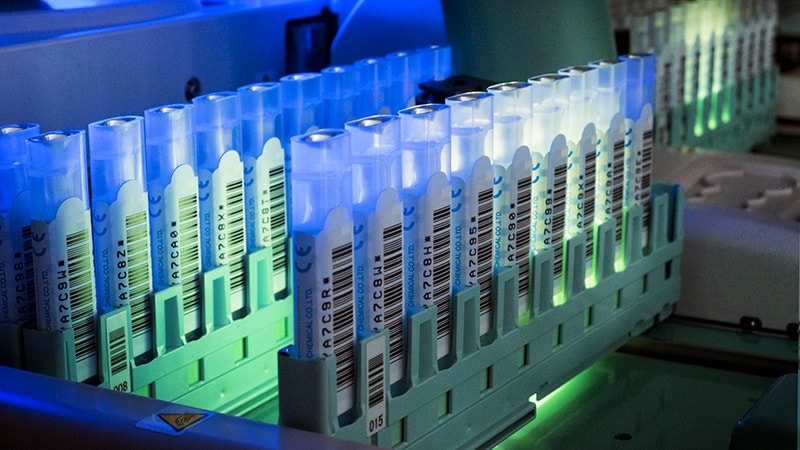Incorporating Age and Anemia in FIT Screening for CRC Risk Prediction
Conceitos Básicos
Age and anemia status should be integrated into FIT screening to enhance the prediction of colorectal cancer risk and the necessity for urgent colonoscopy.
Resumo
The study emphasizes the importance of incorporating age and anemia status into standard fecal immunochemical test (FIT) screening to improve the accuracy of predicting colorectal cancer (CRC) risk. The current approach of using a fixed threshold of 10 micrograms of hemoglobin per gram (μg Hb/g) of feces for FIT screening may lead to unnecessary colonoscopies and resource wastage. By analyzing 33,694 symptomatic patients who underwent FIT screening, the study found that adjusting the FIT threshold based on age and anemia status significantly enhances the identification of patients at a 3% or higher risk for CRC, warranting urgent colonoscopy. The research suggests that tailoring FIT screening criteria can optimize the allocation of healthcare resources and improve patient outcomes.
Stand-Alone FIT Screening Poor Predictor of CRC Risk
Estatísticas
The overall 1-year cumulative risk for CRC was 1.5%.
Nonanemic patients met the 3% risk threshold only if they had a FIT of 40 μg Hb/g feces or higher.
Anemic patients met the 3% threshold at a FIT of ≥ 20 μg Hb/g feces or higher.
Patients under age 40 years met the 3% risk threshold only if they had a FIT ≥ 100 μg Hb/g feces and were anemic.
Nonanemic patients over 70 years old met the 3% risk threshold only if they had a FIT > 40 μg Hb/g feces.
Patients with a FIT test of 10-20 μg Hb/g feces had a CRC risk of 1.1%.
Citações
"The investigators found that the one-size-fits-all approach overestimates the risk for CRC for many patients, leading to unnecessary colonoscopies and wasted resources."
"Incorporating age and anemia status into FIT screening vastly improves risk prediction and recommend incorporating these factors into FIT screening to better identify patients who have a 3% or higher risk for CRC."
Principais Insights Extraídos De
by M. Alexander... às www.medscape.com 04-19-2023
https://www.medscape.com/viewarticle/990955
Perguntas Mais Profundas
How can healthcare systems implement personalized FIT screening based on age and anemia status to optimize CRC risk prediction?
Healthcare systems can implement personalized FIT screening by incorporating age and anemia status into the screening criteria. This can be achieved by adjusting the FIT threshold levels based on age and anemia status to better predict the risk of colorectal cancer (CRC). For instance, nonanemic patients under 40 years old may require a higher FIT threshold to meet the 3% risk threshold, while anemic patients over 70 years old may meet the threshold at a lower FIT level. By tailoring the FIT screening criteria to individual patient characteristics, healthcare systems can optimize CRC risk prediction and identify those who truly need urgent colonoscopy.
What are the potential challenges in integrating age and anemia status into FIT screening criteria, and how can these be addressed?
One potential challenge in integrating age and anemia status into FIT screening criteria is the need for updated guidelines and protocols to reflect these personalized risk factors. Healthcare providers may require additional training to understand and implement the new screening criteria effectively. Furthermore, there may be logistical challenges in updating screening protocols and communicating these changes to patients. To address these challenges, healthcare systems can invest in education and training for healthcare providers, update guidelines to include personalized FIT screening criteria, and develop clear communication strategies to inform patients about the changes in screening protocols.
How can advancements in technology further enhance the accuracy and efficiency of CRC screening methods?
Advancements in technology can significantly enhance the accuracy and efficiency of CRC screening methods. For instance, the use of electronic medical records and data analytics can help healthcare providers identify high-risk patients based on age and anemia status more effectively. Additionally, the development of more sensitive and specific FIT tests can improve the accuracy of CRC risk prediction. Telemedicine and remote monitoring technologies can also streamline the screening process, making it more convenient for patients to undergo screening. By leveraging technology, healthcare systems can enhance the accuracy and efficiency of CRC screening methods, leading to better outcomes for patients.
0
